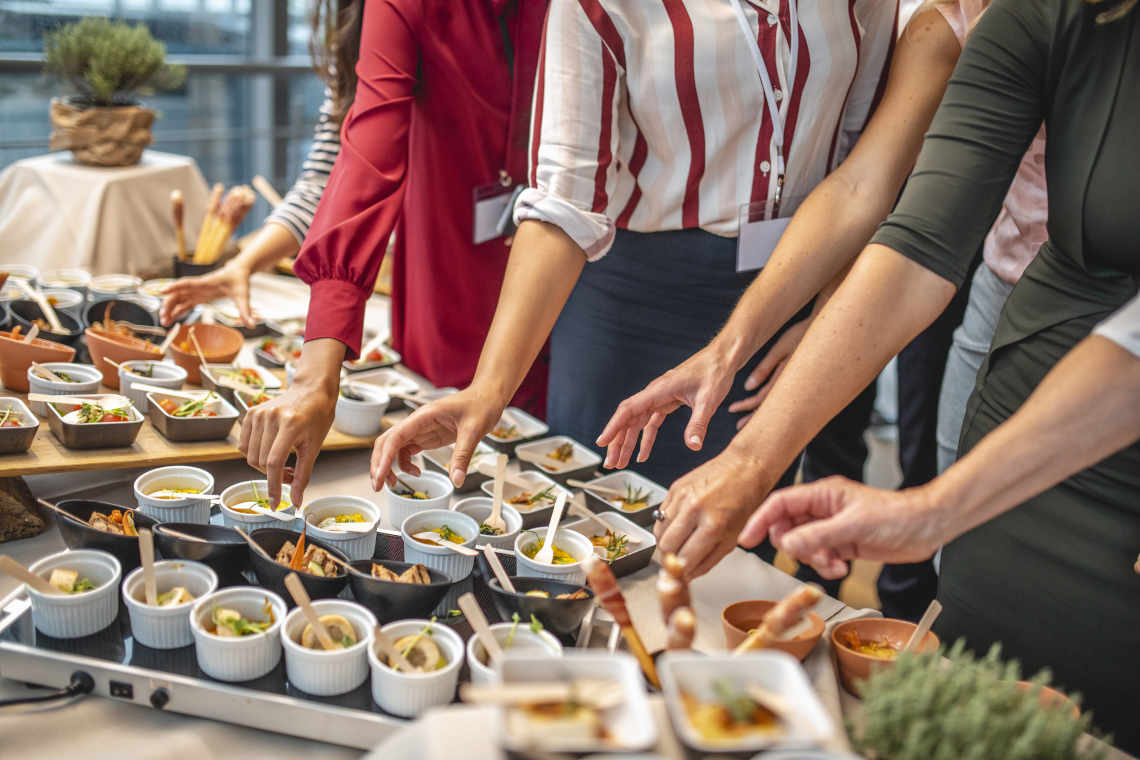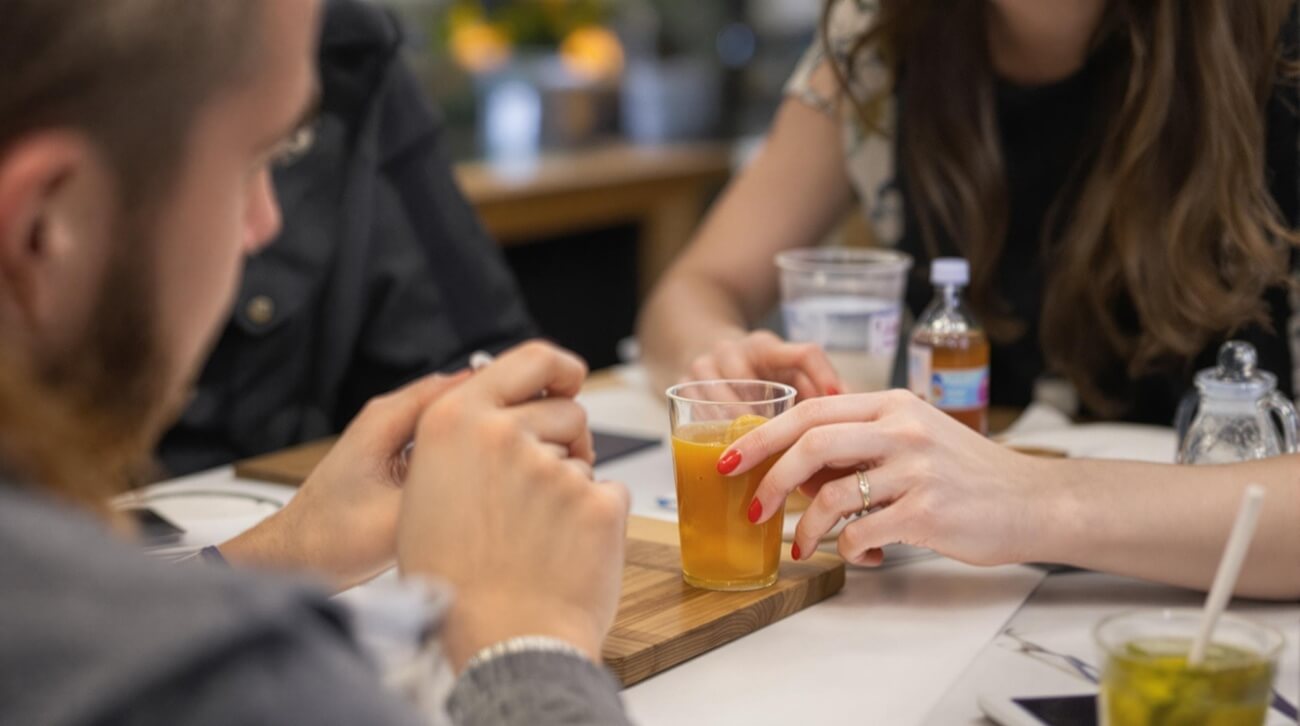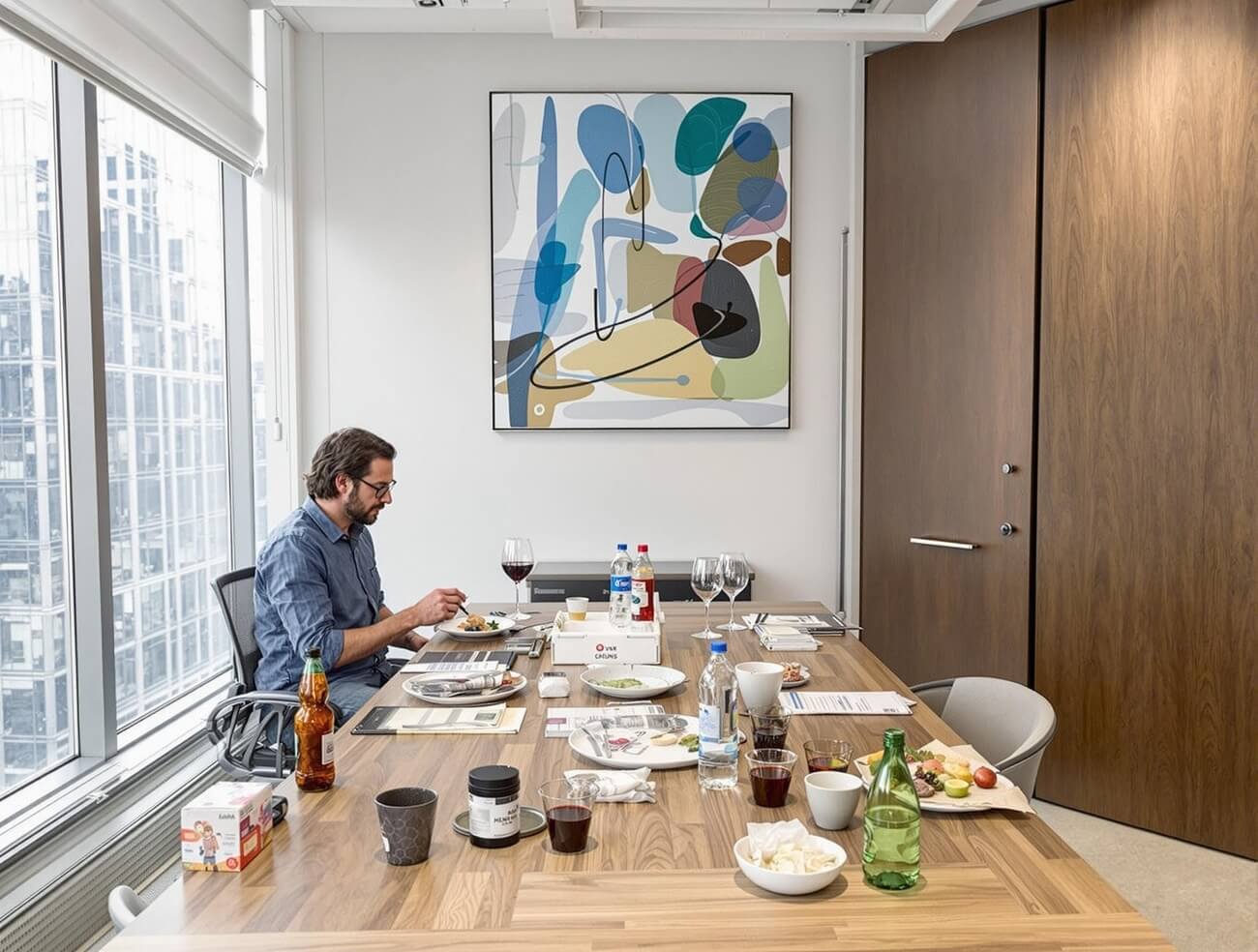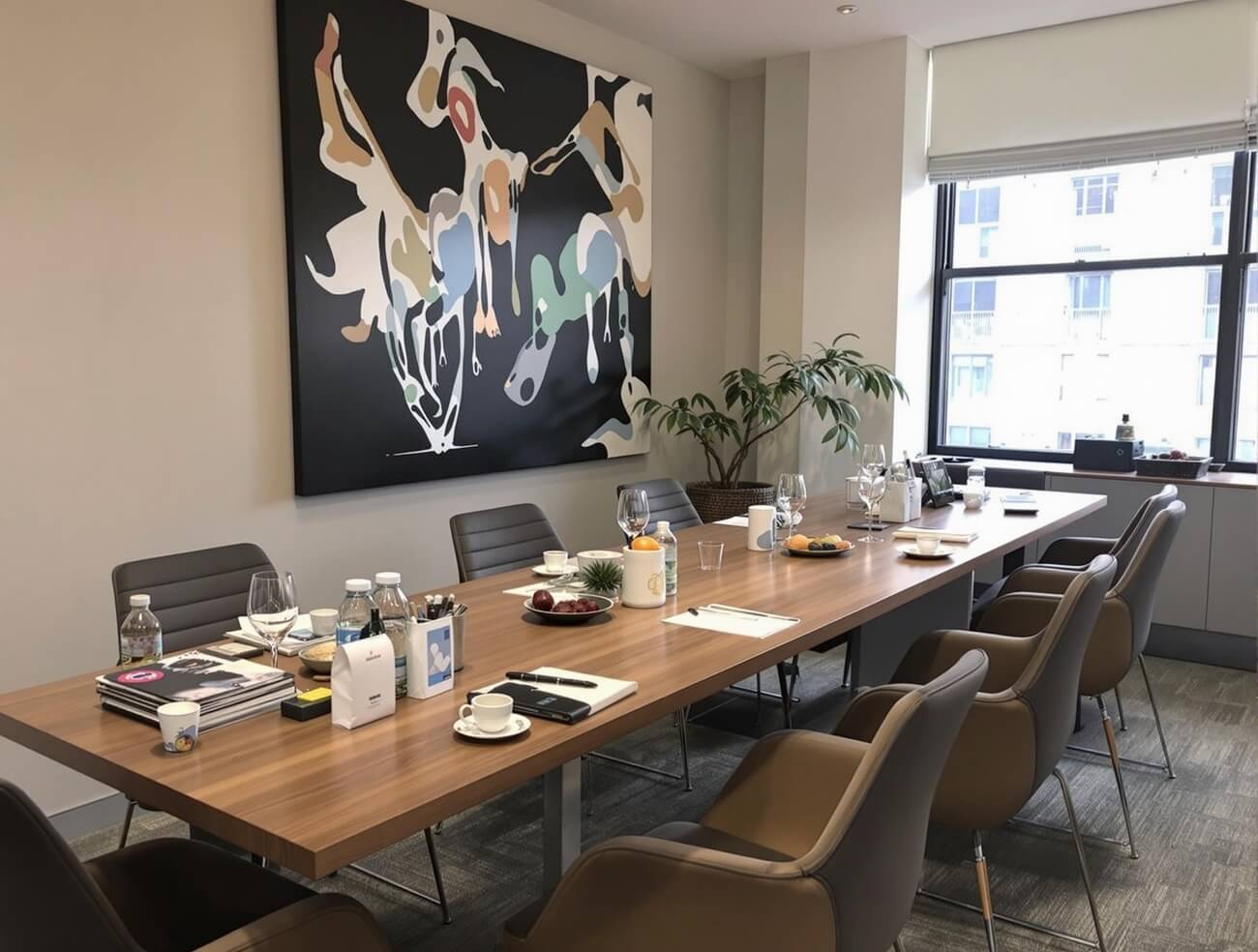Centrale locatie voor het proeven van eten

Bij deze methode worden verschillende mensen samengebracht om voedingsmiddelen te proeven en te beoordelen. Dit levert waardevolle inzichten op in smaakprofielen, de esthetiek van de presentatie en de algemene ontvangst door de consument.
Hoe kunnen we de aantrekkingskracht van een nieuw gerecht of product echt inschatten voordat we het aan de wereld presenteren? Het testen van voedsel op een centrale locatie biedt het antwoord en biedt bedrijven een gecontroleerde omgeving om realtime feedback van potentiële consumenten te verzamelen.
Wat is een voedselsmaaktest op een centrale locatie?
Het is een onderzoekstechniek die feedback van consumenten verzamelt over voedsel- en drankproducten in een gecontroleerde omgeving. Het doel is om de sensorische eigenschappen van de producten te beoordelen, zoals smaak, aroma, textuur en uiterlijk. In tegenstelling tot traditionele smaaktestmethoden, die kunnen plaatsvinden in de productiefaciliteit of in winkels, vindt het testen van voedselsmaken op een centrale locatie plaats op een neutrale locatie, wat zorgt voor onbevooroordeelde resultaten.
Belang van het proeven van voedsel op een centrale locatie

Deze testmethode is cruciaal voor bedrijven in de voedingsmarkt. Door consumenten direct te betrekken en feedback te verzamelen, kunnen bedrijven waardevolle inzichten krijgen in hun voorkeuren, verwachtingen en algehele tevredenheid met verschillende producten. Deze informatie helpt bedrijven bij het nemen van beslissingen over productformuleringen, verpakkingsontwerpen, marketingstrategieën en potentiële nieuwe smaakaanbiedingen.
Bovendien kunnen bedrijven door middel van smaaktesten hun producten vergelijken met die van de concurrentie, verbeterpunten identificeren en een voorsprong behouden op een steeds competitievere markt.
Voordelen van het proeven van voedsel op een centrale locatie
Het biedt een breed scala aan voordelen voor bedrijven, zoals:
- Diepgaande consumenteninzichten: Bedrijven krijgen direct toegang tot consumenteninzichten door dit onderzoek uit te voeren. Hierdoor kunnen ze consumentenvoorkeuren begrijpen, smaakprofielen identificeren die aanslaan bij hun doelgroep en potentiële gaten in de markt ontdekken.
- Productontwikkeling: Het testen van de smaak van voedsel op een centrale locatie is een waardevol hulpmiddel voor productontwikkeling. Het stelt bedrijven in staat om verschillende variaties van hun producten te testen, consumentenvoorkeuren te beoordelen en hun formules te verfijnen. Deze iteratieve aanpak minimaliseert het risico om producten te lanceren die niet aansluiten bij de verwachtingen van de consument en vergroot de kans op succes op de markt.
- Merkdifferentiatie: Met centraal gelegen voedselproeftesten kunnen bedrijven hun merk onderscheiden door unieke smaken, innovatieve verpakkingen en superieure smaakervaringen aan te bieden. Door consequent hoogwaardige producten te leveren op basis van feedback van consumenten, kunnen bedrijven een loyale klantenkring opbouwen en zichzelf vestigen als leiders in de branche.
- Marketingstrategieën: Het kan een aanzienlijke impact hebben op marketingstrategieën. Positieve feedback van smaaktesten kan een krachtig marketinginstrument zijn om vertrouwen, geloofwaardigheid en merkloyaliteit op te bouwen. Bovendien kunnen consumenteninzichten die tijdens smaaktestsessies worden verzameld, marketingcampagnes informeren, waardoor bedrijven gerichte berichten kunnen maken die aanslaan bij hun doelgroep.
- Risicobeperking: Deze test helpt deze risico's te beperken door bedrijven waardevolle feedback te geven voordat een product op de markt komt. Door eventuele zorgen of problemen die tijdens smaaktesten zijn geïdentificeerd aan te pakken, kunnen bedrijven hun producten verfijnen en de kans op negatieve consumentenervaringen minimaliseren.
Huidige trends en technologie toegepast bij het proeven van voedsel op centrale locaties

Dit veld is constant in ontwikkeling, gedreven door technologische vooruitgang en veranderende consumentenvoorkeuren. Hier zijn enkele van de huidige trends en technologieën die worden toegepast op het gebied van smaaktesten:
- Virtuele realiteit (VR): Virtual Reality (VR)-technologie transformeert de manier waarop voedselsmaaktests op centrale locaties worden uitgevoerd. Door realistische proefomgevingen te simuleren, kunnen bedrijven sensorische ervaringen voor deelnemers nabootsen, zelfs op afstand. VR-technologie verbetert de nauwkeurigheid en betrouwbaarheid van de resultaten van smaaktests, wat zorgt voor een meeslepender en boeiender sensorisch evaluatieproces.
- Kunstmatige intelligentie (AI): AI-aangedreven tools revolutioneren deze test door verschillende aspecten van het onderzoeksproces te automatiseren. Van dataverzameling tot analyse, AI-algoritmen kunnen efficiënt grote hoeveelheden sensorische data verwerken. Dit bespaart tijd en middelen en stelt bedrijven in staat om waardevolle inzichten te verkrijgen uit de enorme hoeveelheid sensorische informatie die tijdens smaaktesten wordt verzameld.
- Biometrische metingen: Biometrische metingen zoals hartslagmeting en gezichtsuitdrukkingsanalyse worden geïntegreerd in centrale locatietesten van voedselsmaak. Biometrische metingen bieden inzicht in emotionele en fysiologische reacties, wat bedrijven helpt hun producten aan te passen om positieve consumentenervaringen op te wekken.
Kansen voor bedrijven bij het proeven van voedsel op een centrale locatie
Hier zijn enkele belangrijke gebieden waarop bedrijven deze onderzoekstechniek kunnen benutten:
- Verpakkingsoptimalisatie: Verpakking is cruciaal in de perceptie van de consument en aankoopbeslissingen. Voedselsmaaktesten op een centrale locatie bieden bedrijven inzicht in de impact van verpakkingen op zintuiglijke ervaringen en consumentenvoorkeuren. Door verpakkingsontwerpen te optimaliseren op basis van feedback van smaaktesten, kunnen bedrijven de algehele productervaring verbeteren, zich onderscheiden van concurrenten en meer consumenten aantrekken.
- Gerichte marketingcampagnes: Het testen van voedselsmaken op een centrale locatie genereert waardevolle inzichten van consumenten die kunnen worden gebruikt voor gerichte marketingcampagnes. Door de voorkeuren en kenmerken van hun doelgroep te begrijpen, kunnen bedrijven hun marketingberichten afstemmen op specifieke consumentensegmenten. Deze gepersonaliseerde aanpak verhoogt de effectiviteit van marketingcampagnes, wat leidt tot hogere betrokkenheid en conversiepercentages.
- Menuplanning voor restaurants en cafés: Voor bedrijven in de horeca biedt Central Location Food Taste Testing mogelijkheden voor menuplanning en -optimalisatie. Door smaaktesten uit te voeren, kunnen restaurants en cafés feedback verzamelen over potentiële menu-items, consumentenvoorkeuren beoordelen en hun aanbod verfijnen. Dit zorgt ervoor dat het menu aansluit bij de smaken en voorkeuren van hun doelgroep, wat de eetervaring verbetert en de klanttevredenheid stimuleert.
Uitdagingen bij het proeven van voedsel op centrale locaties voor bedrijven

Deze methodologie brengt zijn eigen uitdagingen met zich mee. Het herkennen van deze obstakels is essentieel voor bedrijven om de inzichten effectief te benutten en de betrouwbaarheid van de resultaten te garanderen. Hier zijn enkele uitdagingen waar bedrijven vaak mee te maken krijgen bij smaaktesten:
- Werving van deelnemers: Het kan lastig zijn om een representatieve steekproef van de doelpopulatie voor de smaaktest te vinden. Bovendien kan elke vertekening in de selectie de resultaten beïnvloeden.
- Omgevingsfactoren: Een centrale locatie is mogelijk niet perfect in overeenstemming met de omgeving waar het product gewoonlijk wordt geconsumeerd. Verschillen in ambiance, verlichting of temperatuur kunnen de perceptie van deelnemers beïnvloeden.
- Sensorische vermoeidheid: Wanneer deelnemers in één sessie meerdere producten moeten uitproberen, kunnen ze last krijgen van sensorische vermoeidheid, wat van invloed is op hun beoordeling.
- Halo-effect: Als deelnemers bekend zijn met het merk of er een vooroordeel over hebben, kan dat hun feedback positief of negatief beïnvloeden.
- Kosten- en logistieke problemen: Het organiseren van smaaktestsessies kan veel middelen kosten en vraagt om geschikte locaties, apparatuur en coördinatie.
Wat maakt SIS International een toonaangevend bedrijf voor proeverijen op centrale locaties?
SIS Internationaal is een erkende leider in het testen van voedselsmaken op centrale locaties, en biedt bedrijven een krachtige combinatie van expertise, geavanceerde faciliteiten en op de consument gerichte inzichten. Met meer dan 40 jaar ervaring in marktonderzoek helpen we bedrijven hun producten te verfijnen en een concurrentievoordeel te behalen in de voortdurend veranderende voedingsindustrie.
Meer dan vier decennia aan expertise
De uitgebreide ervaring van SIS International in het testen van de smaak van voedsel onderscheidt ons als een betrouwbare partner. Onze jarenlange aanwezigheid in de industrie zorgt ervoor dat we betrouwbare en uitgebreide resultaten leveren waarmee bedrijven producten kunnen creëren waar consumenten dol op zijn.
Strategische centrale ligging in New York
Gevestigd in New York, een wereldwijd knooppunt voor uiteenlopende culinaire smaken en consumentenvoorkeuren, SIS biedt ongeëvenaarde toegang tot verschillende demografieën. Deze centrale locatie stelt bedrijven in staat om inzichten te verkrijgen van een zeer representatief publiek, waardoor hun producten op alle markten aanslaan.
Geavanceerde testfaciliteiten
Onze state-of-the-art centrale testfaciliteiten zijn ontworpen om echte consumptieomgevingen te repliceren. Uitgerust met geavanceerde sensorische analysetools en comfortabele testruimtes, zorgt SIS voor nauwkeurige en hoogwaardige feedback van deelnemers.
Toegang tot een diverse consumentenpool
De culturele en demografische diversiteit van New York is ongeëvenaard, en SIS benut dit voordeel door een breed scala aan deelnemers te werven voor centrale locatietesten. Deze aanpak zorgt ervoor dat bedrijven feedback ontvangen die de gevarieerde smaken en voorkeuren van hun doelgroep weerspiegelt.
Op maat gemaakte testoplossingen
Bij SIS International begrijpen we dat elk product uniek is. Onze voedselsmaaktestdiensten zijn op maat gemaakt om aan te sluiten bij de doelen van elke klant.
Datagestuurde inzichten voor productsucces
SIS gaat verder dan basisfeedback en levert bruikbare inzichten die bedrijven helpen hun producten te verfijnen. Van smaak en textuur tot verpakkingsaantrekkingskracht, onze uitgebreide data voorziet merken van de kennis om uit te blinken in de markt.
Betaalbare oplossingen voor bedrijven van elke omvang
SIS International biedt kosteneffectieve, centrale voedselproefservices die geschikt zijn voor bedrijven variërend van startups tot grote ondernemingen. Onze toewijding aan betaalbaarheid zorgt ervoor dat alle klanten uitzonderlijke waarde voor hun investering krijgen.
Expertise in naleving van regelgeving
Navigeren door voedselveiligheid en etiketteringsvoorschriften kan complex zijn, maar SIS vereenvoudigt het proces. Onze testdiensten zorgen ervoor dat uw producten voldoen aan de industrienormen, waardoor de reputatie van uw merk en het vertrouwen van de consument worden beschermd.
Snelle doorlooptijd voor tijdgevoelige projecten
Productontwikkeling werkt vaak met strakke deadlines en SIS begrijpt de behoefte aan snelheid. Onze efficiënte processen en gestroomlijnde workflows stellen bedrijven in staat om snel bruikbare resultaten te ontvangen, waardoor hun time-to-market wordt versneld.
Een toewijding aan het succes van de klant
SIS International is toegewijd aan het ondersteunen van klanten bij het bereiken van hun doelen. Door gepersonaliseerde service te combineren met geavanceerde methodologieën, wordt ervoor gezorgd dat elk project zinvolle resultaten oplevert die productinnovatie en marktsucces stimuleren.
Onze vestigingslocatie in New York
11 E 22nd Street, 2e verdieping, New York, NY 10010 T: +1(212) 505-6805
Over SIS Internationaal
SIS Internationaal biedt kwantitatief, kwalitatief en strategisch onderzoek. Wij bieden data, tools, strategieën, rapporten en inzichten voor besluitvorming. Wij voeren ook interviews, enquêtes, focusgroepen en andere marktonderzoeksmethoden en -benaderingen uit. Neem contact met ons op voor uw volgende marktonderzoeksproject.


